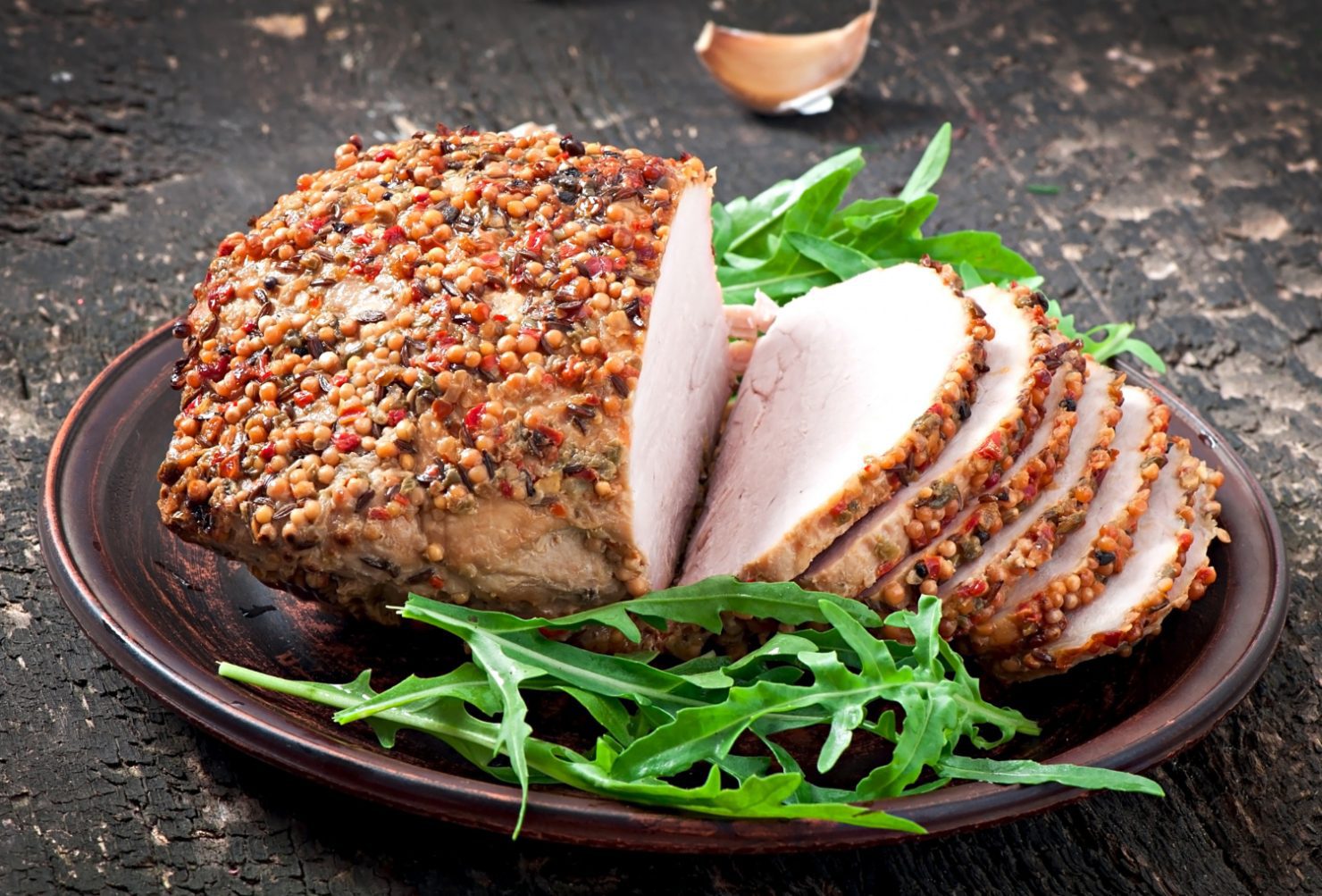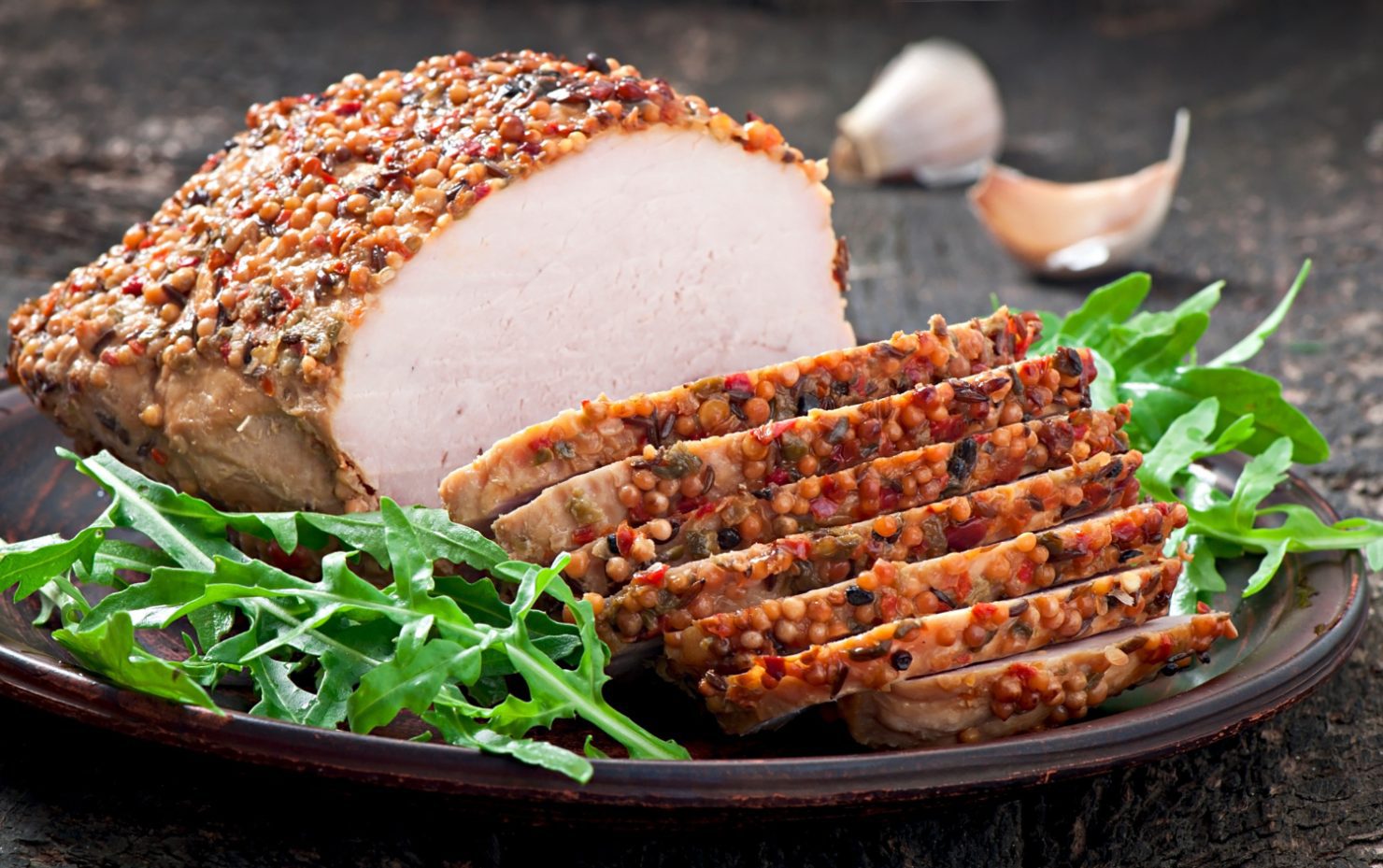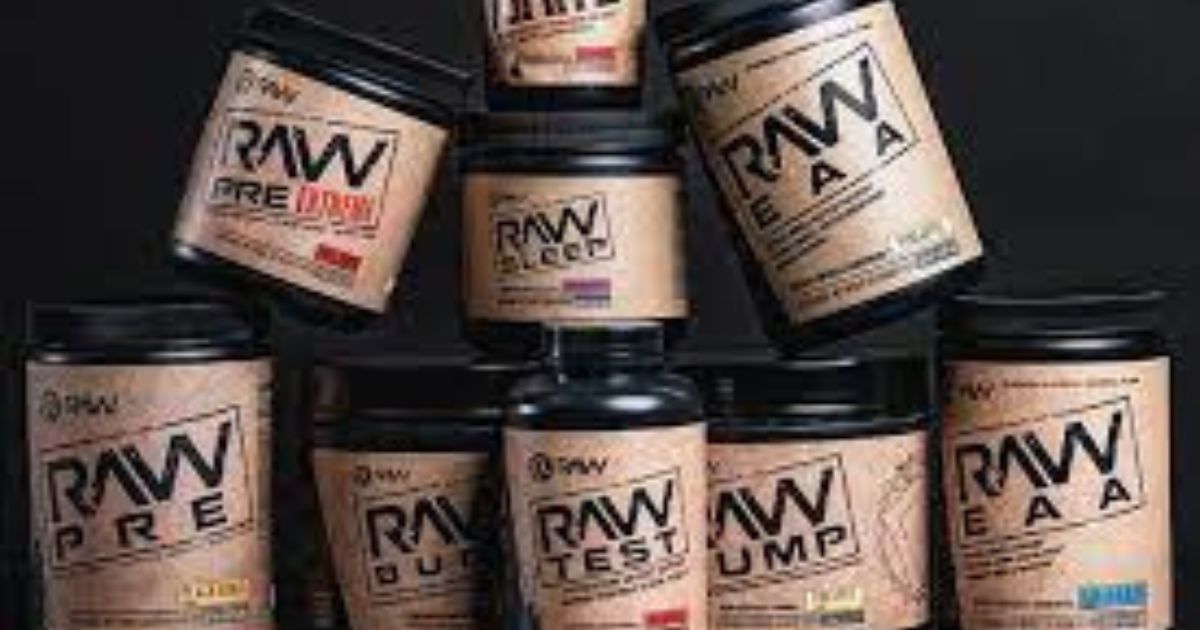Nutrition Facts Pork Tenderloin is an excellent source of protein and nutrients. A three-ounce serving contains about 120 calories, 22 grams of protein, zero carbohydrates, and just three grams of fat.
Nutrition Facts Pork tenderloin is a lean cut of meat that’s both flavorful and nutritious. It’s low in calories and carbohydrates, making it an excellent choice for those watching their weight or trying to manage diabetes. A three-ounce serving contains about 120 calories, 22 grams of protein, zero carbohydrates, and just three grams of fat.
In addition to being a great source of protein, pork also contains essential vitamins and minerals, including niacin, phosphorus, potassium, and vitamin b6. In this article, we will explore the nutrition facts of pork tenderloin in detail and explain why it’s a healthy addition to any diet.

Credit: www.cleaneatingmag.com
Why Pork Tenderloin Is A Preferred Cut
Nutrition Facts Pork tenderloin is a popular cut of meat for many reasons. This lean and boneless meat cut is tender and flavorful and can be cooked in various ways. Here are some reasons why pork tenderloin is a preferred cut:
Comparison Of Pork Tenderloin With Other Pork Cuts
When compared to other pork cuts, Nutrition Facts of pork tenderloin stands out for its tender texture, leanness, and great taste. Listed below are some of the differences between pork tenderloin and other pork cuts:
- Pork is leaner with only 2.98g fat per 100g, while pork ribs contain 22.64g fat per 100g.
- Pork has less cholesterol compared to pork chops.
- Pork tenderloin is boneless, whereas other cuts come with bones, making it easier to cook and carve.
- The texture of pork tenderloin is more delicate than other meat cuts, which can be a bit tough in texture.
- Tenderloin has a milder flavor, making it a perfect canvas for different flavor profiles like marinades and seasonings.
Benefits Of Choosing Tenderloin Over Other Meats

If you’re looking for a lean and flavorful meat cut, pork tenderloin should be your top choice. Here are some benefits of choosing pork tenderloin over other meats:
- Nutrition Facts of Pork tenderloin is an excellent source of protein, making it a healthy meat option for building muscles and tissue.
- Pork tenderloin is low in calories, making it an ideal choice for those trying to maintain or lose weight.
- Pork tenderloin is packed with essential nutrients, including vitamins b6 and b12, niacin, phosphorus, and thiamine.
- The versatility of pork tenderloin makes it a popular choice for cooking meals, whether grilled, roasted, or sautéed.
- Nutrition Facts of Pork tenderloin can be an affordable meat option compared to other meat cuts, making it an excellent choice for budget-friendly meals.
Choosing pork tenderloin as your preferred meat cut can offer a range of culinary and health benefits. With its tender texture and mild flavor, it’s a versatile choice that can easily adapt to any recipe. Plus, it offers a leaner and healthier option without compromising on taste.
So, next time you’re at the meat counter, consider picking up a pork tenderloin and enjoy the delicious and nutritious meal it can make.
Nutrition Facts of Pork Tenderloin
This is one of the tastiest and healthiest meats available. It is not only delicious but also a good source of nutrition. Here are some important nutrition facts about pork tenderloin that you might want to know.
Protein Content
Protein is essential for building and repairing tissues. It helps in maintaining healthy skin, hair, and nails. One 3-ounce serving of cooked pork tenderloin contains:
- 22 grams of protein
Carb Content
Carbohydrates are a primary source of energy for the body. One 3-ounce serving of cooked pork tenderloin contains:
- 0 grams of carbohydrates
Fat Content
Fat provides the body with energy and helps in the absorption of vitamins. Pork tenderloin is a lean cut of meat, making it a great choice for those who want to maintain their weight. One 3-ounce serving of cooked pork tenderloin contains:
- 3 grams of fat
- 1 gram of saturated fat
Vitamins And Minerals Present
Nutrition Facts of Pork tenderloin is a great source of several essential vitamins and minerals. These include:
- Vitamin b6 – helps the body in breaking down proteins and red blood cell production
- Vitamin b12 – important for brain function and red blood cell production
- Niacin – helps in energy production and the regulation of cholesterol levels
- Phosphorus – important for strong bones and teeth
- Selenium – helps in thyroid function and immune system support
- Zinc – important for maintaining healthy skin, hair, and nails
Caloric Value
Caloric intake is essential for the body’s energy needs throughout the day. One 3-ounce serving of cooked pork tenderloin contains:
- 120 calories
Porkis a great source of Nutrition Facts , with low fat and high protein content. It provides the body with several essential vitamins and minerals that help maintain good health. So, next time you plan your meals, make sure to include this delectable cut of meat.
Healthy Eating With Nutrition Facts Pork Tenderloin
Pork tenderloin is one of the healthiest cuts of meat that can be added to a meal. We will discuss the benefits of including pork tenderloin in your diet as well as tips for integrating it into your meal plan to maintain a healthy lifestyle.
The Role Of Pork Tenderloin In Healthy Eating
Pork is an excellent source of protein, making it perfect for those looking to build muscle or simply maintain a healthy weight. Apart from that, it is also rich in other essential nutrients like iron, zinc, and vitamin b12, which are crucial for maintaining optimal health.
Here are some other significant benefits of pork in healthy eating:
- It is low in calories and fat, making it ideal for people on a weight-loss journey.
- Pork is naturally low in sodium, which makes it a healthy choice for individuals watching their salt intake.
- It contains unsaturated fats, which are beneficial for the heart and help to lower cholesterol levels in the body.
- It is easily digestible, making it ideal for people with digestion-related issues.
Nutrition Tips For Integrating Pork Tenderloin In A Meal Plan

Apart from being healthy, pork tenderloin is delicious and versatile, making it an excellent addition to any meal. Here are some nutrition tips for integrating this cut of meat into your diet while making sure that you maintain a healthy lifestyle:
- Always choose lean cuts of pork tenderloin to keep calories and fat content low.
- Pair it with healthy sides such as roasted vegetables, whole grains, and leafy greens to add fiber and other essential nutrients to your meal.
- For flavor, grill, roast, or bake the pork tenderloin with spices and herbs instead of adding sugar-filled sauces and marinades.
- Cook the pork tenderloin to the appropriate temperature to avoid foodborne illnesses and ensure that it is safe to eat.
- Avoid processed pork products such as bacon and sausage, which have high salt and fat content, and are often laden with preservatives.
Pork tenderloin is a healthy and tasty addition to any diet. By following the above tips, you can enjoy this delicious meat while ensuring that you maintain a healthy lifestyle.
Cooking Pork Tenderloin
Different Cooking Methods For Pork Tenderloin
There are several ways to cook pork tenderloin, each having a distinct taste and texture. The choice is yours, depending on your taste preferences. Here are some of the methods you can try:

- Grilling: Grilling is one of the most popular ways to cook pork tenderloin. This method produces a smoky flavor and a slightly charred exterior. Preheat your grill to medium-high heat and cook the tenderloin for about 20 minutes, or until the internal temperature reaches 145 degrees f.
- Roasting: Roasting pork tenderloin in the oven is another great way to cook this lean cut of meat. Preheat your oven to 375 degrees f and cook for 25-30 minutes, or until the internal temperature reaches 145 degrees f. for added flavor, season the tenderloin with herbs, spices, or a rub.
- Broiling: Broiling is similar to grilling, but the heat source is above the pork instead of below it. This method is best for smaller cuts of pork tenderloin. Preheat your broiler and cook the tenderloin for about 10-15 minutes, flipping once halfway through.
- Pan-searing: Pan-searing is a quick and easy way to cook pork tenderloin. Heat some oil in a skillet over medium-high heat and cook the tenderloin for about 3-4 minutes per side, or until the internal temperature reaches 145 degrees f.
Tips To Get The Most Nutritional Benefits While Cooking
Pork tenderloin is a healthy and nutritious protein source that can be easily cooked in a variety of ways. Here are some tips to get the most nutritional benefits while cooking:
- Avoid using too much oil: While cooking, use minimal amounts of oil to ensure the meat retains its nutritional value.
- Don’t overcook: Overcooking pork tenderloin can cause the loss of important nutrients. Cooking the meat until it reaches an internal temperature of 145 degrees fahrenheit is sufficient.
- Choose healthy seasonings: Avoid using salt-based seasonings and instead, opt for fresh herbs and spices.
- Use a meat thermometer: Using a meat thermometer ensures that the pork is thoroughly cooked but not overcooked, helping to retain its nutritional value.
By using these tips, you can cook a delicious and nutritious pork tenderloin that is both healthy and tasty!
Flavor And Seasoning Options
Pork tenderloin is a lean and versatile meat that can be prepared in various ways. One of the best things about this protein-rich food is that it can be flavored and seasoned in many ways. Here are a few important things you should consider while seasoning your pork tenderloin.
Healthy Seasoning Options For Pork Tenderloin
If you are a health-conscious person and want to stay fit while enjoying your food, you can use the following seasoning options.
- Lemon juice and zest: Lemon is a natural source of vitamin c and provides a tangy flavor to your pork tenderloin. You can marinate your pork tenderloin with lemon juice and zest for a fresh and healthy taste.
- Herbs and spices: You can add herbs and spices like thyme, rosemary, cumin, paprika, coriander, and garlic to enhance the flavor of your pork tenderloin. These herbs and spices are also a good source of antioxidants, vitamins, and minerals.
- Mustard: Mustard contains a compound known as sinigrin that can provide a nutty flavor to your pork tenderloin. You can use a mixture of dijon mustard and honey to create a marinade and add some flavor to your pork.
The Risks Of Using Unhealthy Seasonings
When it comes to seasoning your pork tenderloin, you should pay attention to the type of seasonings you use. Some unhealthy seasoning options include:
- High-sodium seasonings: Seasonings high in sodium like salt, soy sauce, and worcestershire sauce can increase your blood pressure and put you at risk of heart disease.
- Sugar-based seasonings: Sugar-based seasonings like barbecue sauce can be high in calories, and consuming too much sugar can lead to weight gain and other health issues.
- Artificial seasonings: Artificial seasonings like msg and other additives can cause headaches, allergic reactions, and other symptoms.
Seasoning your pork tenderloin can add extra flavor to your healthy meal. However, you should choose your seasonings wisely to avoid unhealthy risks. Try out different seasoning options to keep things interesting and tasty.
Frequently Asked Questions For Nutrition Facts Pork Tenderloin
What Are The Nutrition Factors Of Pork Tenderloin?
Pork tenderloin is a rich source of protein, vitamin b6 and riboflavin. Additionally, it contains essential minerals such as calcium, potassium, magnesium, and iron. It also contains a low level of fat and calories.
Is Pork Tenderloin A Healthy Food Option?
Yes, pork tenderloin is a healthy food option due to its high protein, low fat, and low-calorie content. It is also rich in essential vitamins and minerals that are crucial for a balanced diet.
How Can Pork Tenderloin Be Cooked For Maximum Nutrition?
Pork tenderloin can be cooked in various ways such as grilling, roasting, or pan-frying. For maximum nutrition, it should be cooked in a way that doesn’t add extra fat or unhealthy oils. Avoid processed seasonings and instead use fresh herbs and spices to add flavor.
How Much Pork Tenderloin Should Be Consumed In A Day?
It is recommended to consume 3-4 ounces of pork tenderloin in a day, which is about the size of a deck of cards. It is also important to balance pork intake with other sources of protein in the diet to maintain a balanced and healthy diet.
Are There Any Health Risks Associated With Consuming Pork Tenderloin?
Consuming too much pork can lead to an increased risk of certain health conditions such as heart disease and certain cancers. It is important to consume pork in moderation as part of a balanced diet that includes a variety of other protein sources.
Additionally, pork should always be cooked to the recommended temperature to prevent the risk of foodborne illnesses.
Is Pork Tenderloin Suitable For People With Special Dietary Requirements?
Yes, pork tenderloin is suitable for people with special dietary requirements such as those following a gluten-free diet or low-carb diet. It is also a good option for people who need a high protein diet such as athletes, bodybuilders, and people recovering from surgery.
Conclusion
To sum it up, pork tenderloin is a healthy and delicious meal option that can help provide essential nutrients for the body. With its low-fat content, high protein, and vitamin b6, it’s an excellent addition to your diet. The meat can be seasoned in many different ways, making it a versatile ingredient that can be used to create a wide range of dishes that will delight the taste buds.
Whether you’re looking to improve your overall health or simply want a tasty meal, pork tenderloin can help you achieve your goals. So, next time you’re at the grocery store, be sure to grab some pork tenderloin and start cooking! With its rich nutritional value and delicious taste, it’s a win-win on all fronts.




